Seakeeper 40 Installation Manual (90715-2) 40-234-0043 to Current
4.0 Cooling Installation
4.1 Cooling Installation Introduction
The Seakeeper 40 is shipped with the cooling circuit filled and ready for use. Only a quick confirmation of glycol level is required.
Reference Documents
- 90710 – Seakeeper 40 Cable Block Diagram
- 90711 – Seakeeper 40 Cooling Water Schematic
- 30529 – 24 VDC Seawater Pump Assembly
- TB-90191 – Seawater Cooling Pump Recommendations
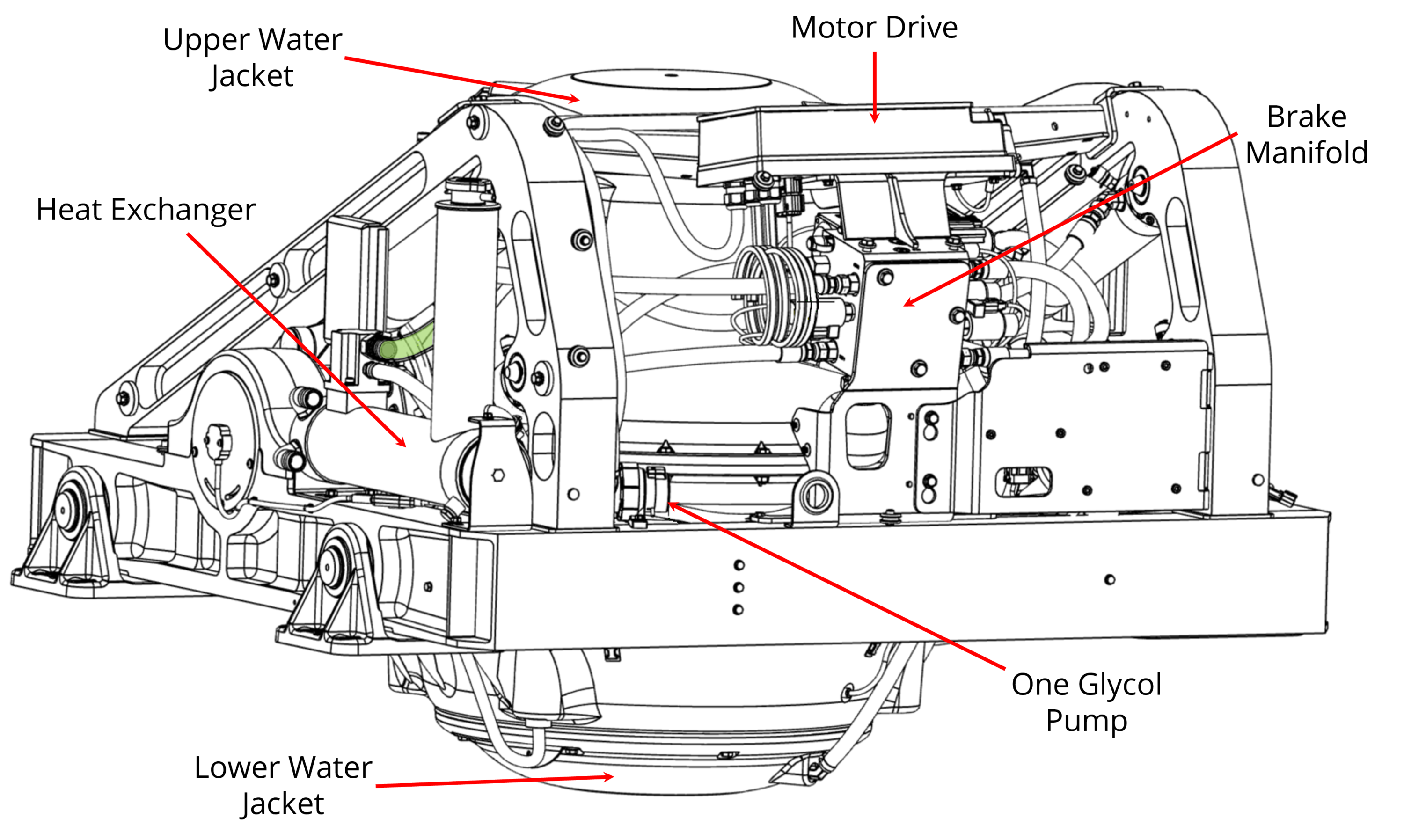
4.2 Installation Considerations
- Installer is responsible for supplying a dedicated seawater pump and associated plumbing. Seawater connections on the heat exchanger mate with 1 in. (25.4 mm) hose. An optional seawater pump can be purchased through Seakeeper (P/N 30490).
- There is no need to disconnect hose from glycol pump except to replace the pump. In this case, provision will need to be made to catch draining glycol as plumbing is disconnected. Use caution to avoid breaking plastic hose connections on pump casing.
- An output is available from the Seakeeper 40 wire harness to power and automatically control seawater pump. This pump must operate on 24 VDC and consume less than 20 A. Pumps requiring other voltages or higher current can still be controlled by using this supply from the wire harness to trigger an installer-supplied contactor, but a separate source of power must be provided.
- The seawater pump is powered by Seawater Pump Output Cable, via “SW Pump 24 VDC Out” on the Seakeeper 40, as outlined in Electrical Installation section.
- A dedicated through-hull fitting should be installed for each Seakeeper unit onboard the vessel to ensure sufficient seawater flow to each unit.
- It is recommended the seawater pump be installed below the waterline, as close to baseline of the vessel as practically possible, to maintain positive inlet pressure on the pump in all operating conditions.
- A self-priming seawater pump may be required to maintain water flow in all underway conditions. Cavitation can occur at the seawater inlet and potentially cause an air-lock condition restricting seawater flow to the heat exchanger.
- Maximum seawater pressure in heat exchanger is 20 psi (1.4 bar).
- Seawater flow requirement through heat exchanger is 13 GPM (49 LPM) minimum and 15 GPM (57 LPM) maximum under all operating conditions of the boat. When sizing seawater pump, installer should factor in losses for raw water plumbing. In addition to initial operation at dock, new Seakeeper installations should be checked to be within the flow requirements while vessel is at speed. Flows higher than 15 GPM (57 LPM) could affect heat exchanger life.
- Vented loops (shown in Figure 27) are optional and should only be considered with centrifugal style pumps. Self-priming or positive displacement style pumps do not require a vented loop, including Seakeeper supplied optional pump (P/N 30490).
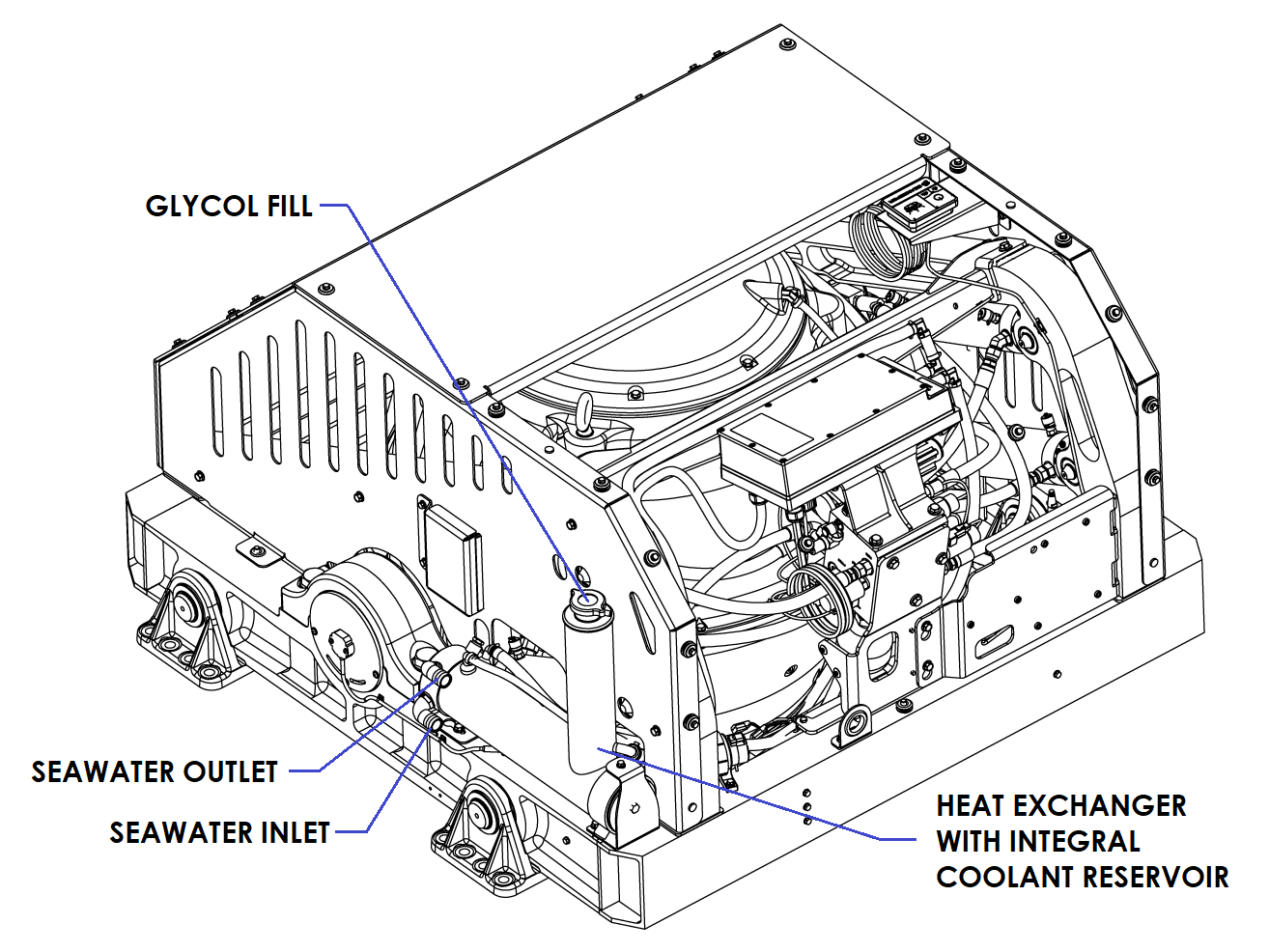
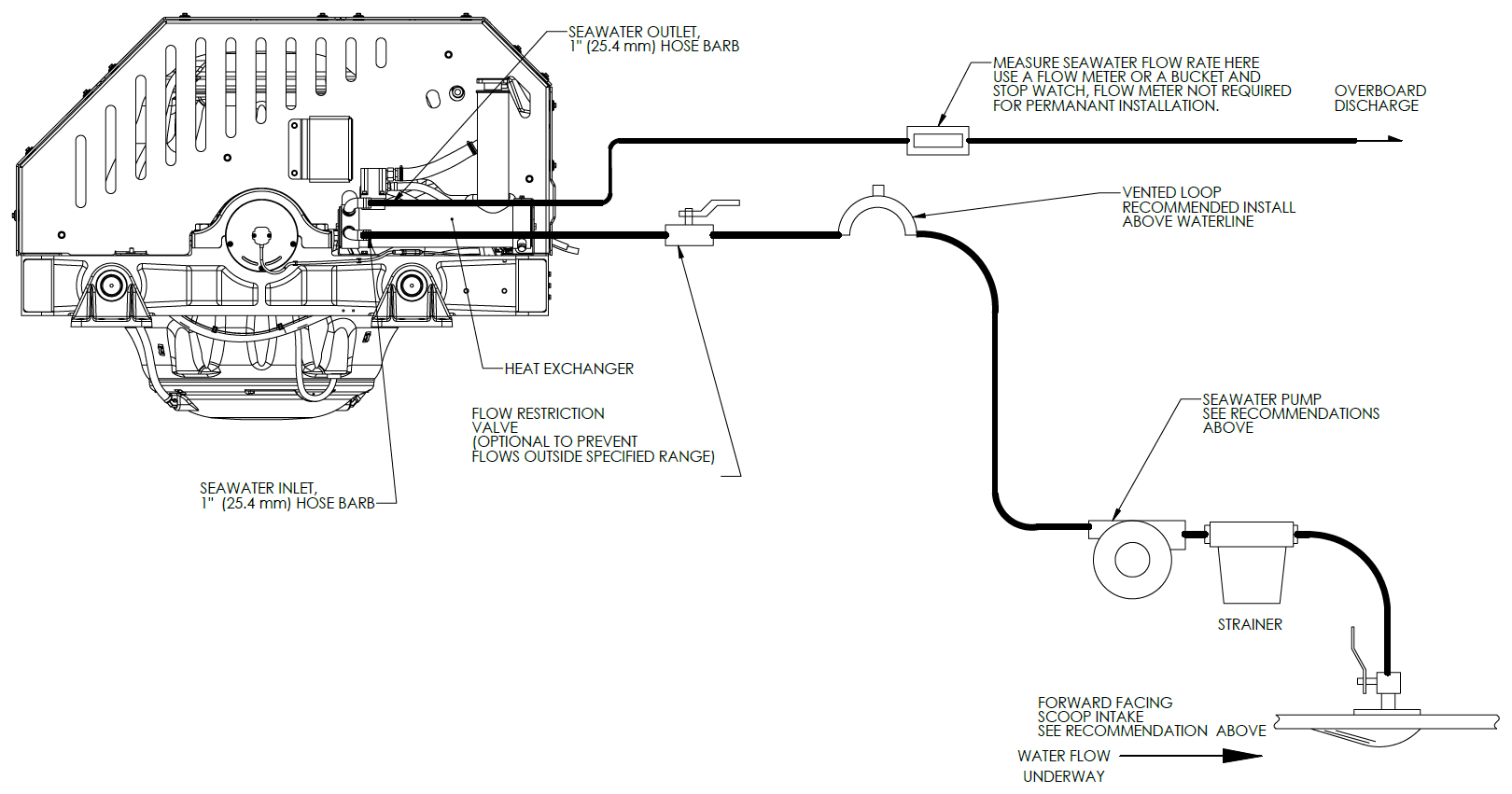
4.3 Connecting Seawater to Heat Exchanger
Connecting Seawater Pump to Heat Exchanger
- Connect seawater from installer-supplied pump to lower 1 in. (25.4 mm) hose barb on heat exchanger. Use the same practices as other below waterline seawater plumbing. Required flow rate is 13 GPM (49 LPM) minimum and 15 GPM (57 LPM) maximum.
- Connect seawater discharge (upper hose barb) to overboard drain. Use the same practices as typical below waterline seawater plumbing.
- In addition to initial operation at dock, new installations should be checked with a flow meter for minimum 13 GPM (49 LPM) and maximum of 15 GPM (57 LPM) flow under all normal operating conditions.
- If no other method of confirming flow is available, discharge line may be temporarily diverted to a bucket. Flow is calculated from time to fill a known volume.
- A self-priming seawater pump (customer/installer supplied) may be required due to installation location to maintain water flow in all underway conditions where cavitation near the intake may occur and potentially cause an air-lock condition restricting seawater flow to the heat exchanger.
- Inspect raw water plumbing after sea trial for any signs of leakage.
- Heat exchanger contains removable end-caps to provide access for cleaning the tube bundle.

Seakeeper Optional DC Seawater Pump (P/N 30529)
- Seakeeper offers a self-priming DC Seawater Pump as an optional addition, P/N 30529 – 24 VDC Seawater Pump, shown in Figure 29.
- Pump fittings are 3/4 in. NPT. To connect to Seakeeper 40 heat exchanger, a 3/4 to 1 in. barbed adapter will be necessary. DO NOT use bronze or brass fittings on the optional DC Seawater Pump. Use pipe sealant on the threads and other connections.
- The base does not require direct mounting if one of the pipe flanges is rigid mounted. Do not rigid mount both the flanges and the base to avoid mounting tolerances that may distort the motor base. Install the pump with the shaft in a horizontal direction. NEVER install the pump vertical with the motor below the pump.
- Figure 29 provides a mounting hole dimensions for mounting the DC Seawater Pump.
- The pump assembly is pre-wired for connection to the Seakeeper 40 wire harness through Cable 5. The pump specifications are as follows:
| Voltage | 24 VDC |
| Overcurrent Protection Rating | 20 A |
| Suction Lift | 26 FT |
| Flow Rate | 23 GPM with 10 FT suction head |
| Ignition Protection | ISO 8846 or equivalent |
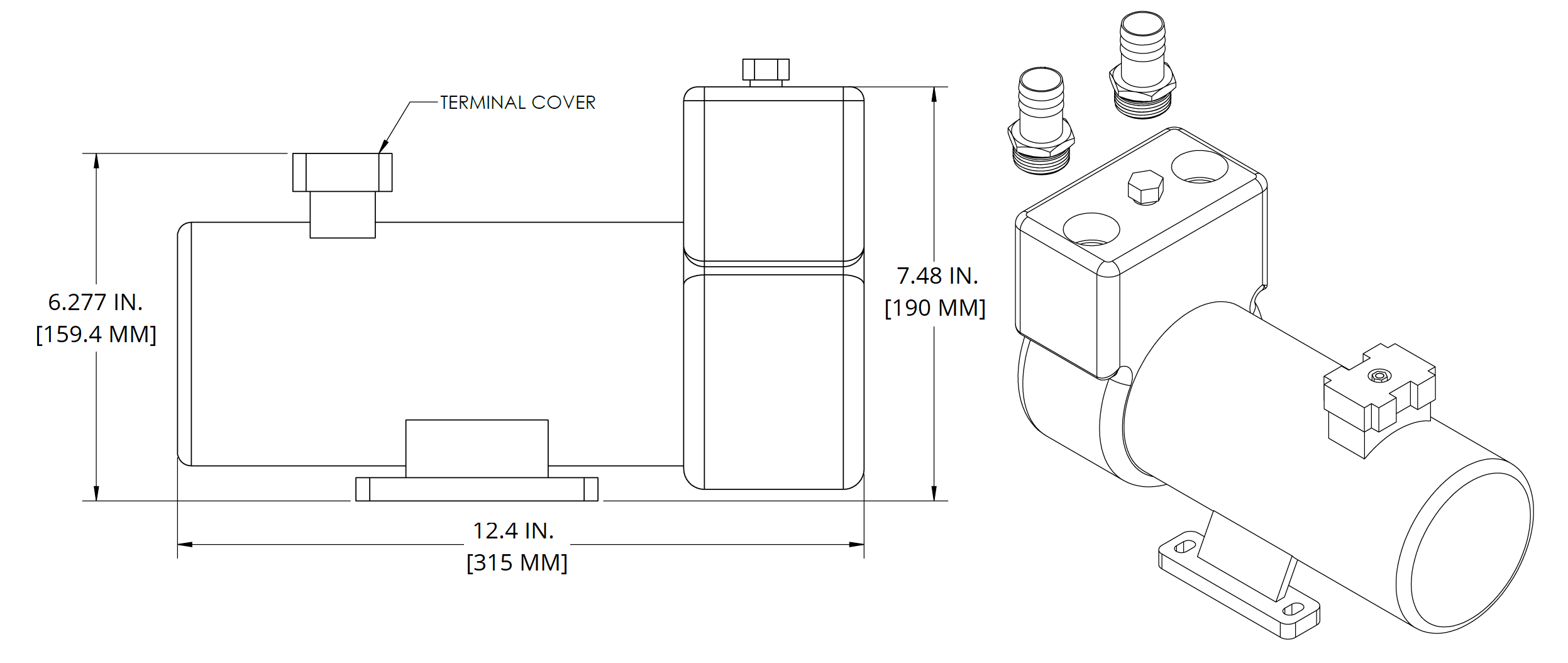
4.4 Adding Coolant
- Cooling system is filled to proper level when shipped, with a mixture of 50% ethylene glycol and 50% distilled water. The clear tube between the thermostat housing and reservoir should be filled with green coolant mixture. If level has dropped, check for evidence of leaks at all connections before adding fluid as described below. If coolant is at the correct level, skip to Section: Connecting Seawater to Heat Exchanger.
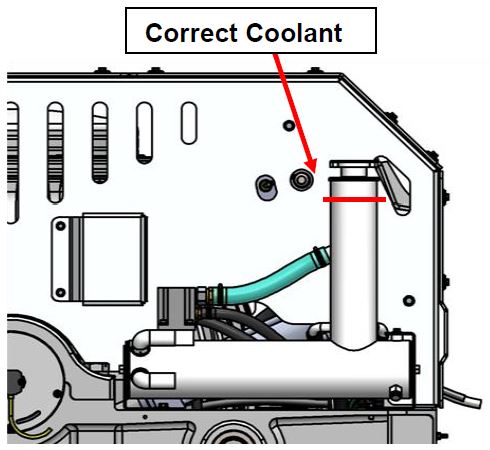
- Mix 50% ethylene glycol with 50% distilled water in a clean container. Refer to Table 1 or glycol manufacturer’s literature for freezing points.
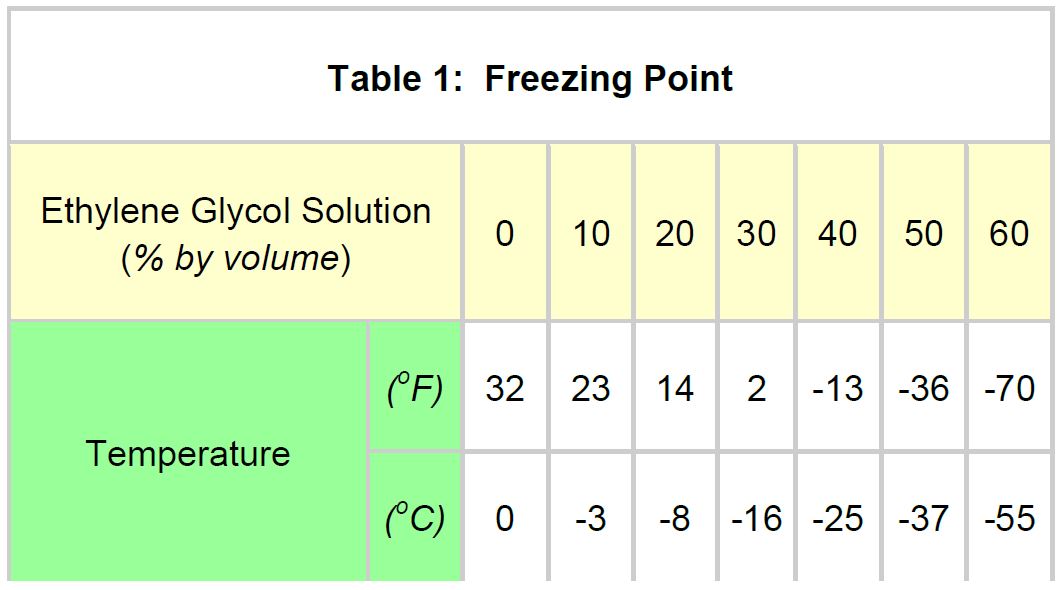
- Remove pressure cap on top of reservoir. Pour mixture in until level is 1 – 2 inches from top of reservoir as shown in Figure 30. Filling reservoir above this level will not cause any damage but coolant may be expelled from pressure relief port below cap due to normal thermal expansion of coolant.
- Connect 24 V to controller.
- At the Display check for any ALARMS
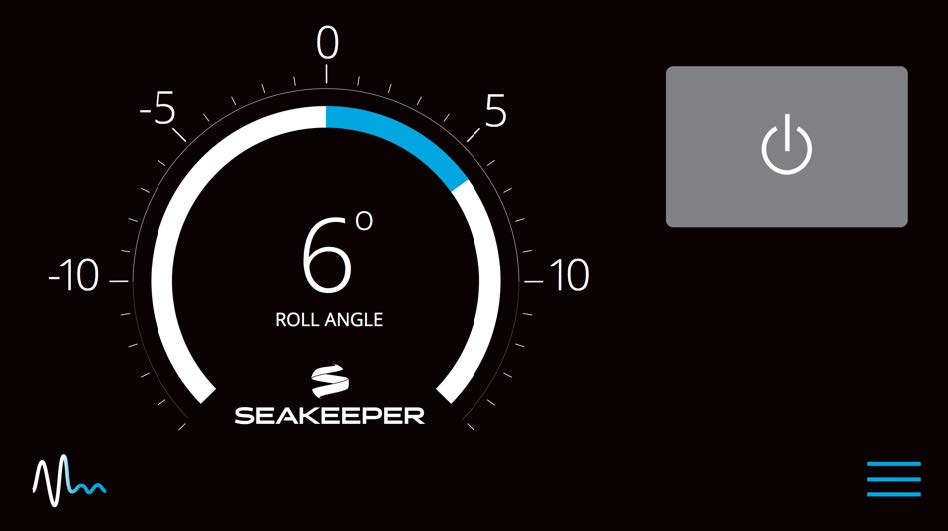
- Press the POWER ON/OFF button.

- The flywheel will start to spin and the glycol pump will start.
- Recheck glycol level with fluid circulating in coolant circuit. Sight down inside reservoir and check that coolant level is above upper port on reservoir as shown in Figure 30. Replace cap.
- After several minutes of running, press POWER ON/OFF button
 to turn power off to the flywheel and glycol pump.
to turn power off to the flywheel and glycol pump.
- At the Display check for any ALARMS
- The cooling system is self-purging. If small amounts of air are in the system, they will most likely be dislodged during the first sea trial. Re-check level after sea trial and add fluid if required.